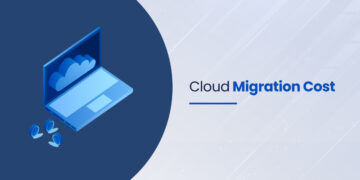In the ever-evolving landscape of enterprise computing, where cloud virtualization has long been the dominant paradigm, a powerful counter-current is gaining significant momentum: the surprising resurgence of bare metal. Once thought relegated to legacy systems or niche applications, bare metal servers are making a dramatic comeback, driven by an insatiable demand for peak performance, uncompromising security, and predictable costs. This isn’t merely a nostalgic nod to past technologies; it’s a strategic shift by businesses to harness the raw, unadulterated power that only dedicated hardware can provide. For organizations grappling with high-performance computing (HPC) workloads, data-intensive analytics, or stringent regulatory compliance, understanding the renewed appeal and strategic advantages of bare metal is critical. This dynamic trend presents a compelling opportunity for content creators to delve into a topic with burgeoning interest, optimizing for SEO and high Google AdSense revenue by providing comprehensive insights into why bare metal is back and how it’s shaping the future of enterprise IT.
The Cloud Conundrum: Why Bare Metal?
For years, the narrative in IT has been dominated by the cloud. Virtual machines (VMs) and containers offered unparalleled flexibility, scalability, and ease of deployment. However, as cloud adoption matured, certain inherent limitations became evident, especially for specific types of workloads. These challenges have paved the way for bare metal’s re-emergence.
Key reasons for bare metal’s renewed appeal include:
- Unrivaled Performance: This is the primary driver. Virtualization layers introduce overhead, meaning that VMs can’t fully leverage the underlying hardware’s capabilities. Bare metal provides direct access to CPU, RAM, and I/O resources, translating to significantly faster processing, lower latency, and higher throughput.
- Predictable Performance (No Noisy Neighbors): In a multi-tenant cloud environment, your VM might share physical hardware with other customers. Their intense workloads (the “noisy neighbors”) can impact your application’s performance, leading to unpredictable latency and reduced responsiveness. Bare metal eliminates this variability, ensuring consistent, dedicated resources.
- Enhanced Security and Isolation: For highly sensitive data or applications under strict regulatory compliance (e.g., finance, healthcare), complete physical isolation is often a requirement. Bare metal offers a single-tenant environment, drastically reducing the attack surface compared to shared virtualized infrastructure.
- Cost Efficiency for Consistent Workloads: While cloud VMs offer pay-as-you-go flexibility, for consistent, high-utilization workloads, bare metal can be surprisingly more cost-effective in the long run. There are no recurring charges for virtualization licenses or overhead, leading to predictable monthly expenses.
- Specialized Hardware Access: Certain applications require highly specialized hardware (e.g., specific GPUs for AI/ML, FPGAs, NVMe drives) that might not be readily available or fully optimized within standard virtualized cloud offerings. Bare metal provides direct access to and control over these unique configurations.
- Compliance and Governance: Industries with stringent compliance mandates (e.g., HIPAA, PCI DSS, GDPR) often find it easier to meet regulatory requirements on dedicated, physically isolated infrastructure, where they have complete control over the environment.
The shift isn’t about abandoning the cloud; it’s about a more intelligent, hybrid approach where businesses strategically deploy workloads on the infrastructure that best meets their specific performance, security, and cost demands.
Defining Bare Metal: Unpacking the Technology
To fully appreciate its resurgence, it’s essential to understand what bare metal truly entails in today’s IT landscape, contrasting it with virtualized environments.
A. Direct Hardware Access: The Core Advantage
At its fundamental level, a bare metal server is a physical computer dedicated to a single tenant or application. This means:
- No Hypervisor Overhead: Unlike virtual machines, which run on top of a hypervisor (a software layer that manages and abstracts the physical hardware), bare metal operates directly on the hardware. This eliminates the computing resources consumed by the hypervisor itself, freeing up CPU cycles, memory, and I/O bandwidth for the application.
- Full Resource Utilization: Every component of the server—CPU cores, RAM, network interfaces, and storage devices—is exclusively available to the operating system and applications running on that server. There’s no sharing of these resources with other virtual instances, ensuring maximum potential is always utilized.
- Kernel-Level Access: Developers and administrators often have deeper, more granular control over the operating system and hardware drivers, allowing for highly optimized configurations tailored to specific software requirements.
B. Single-Tenant Isolation: Security and Predictability
The single-tenant nature of bare metal is a significant draw for many enterprises.
- Elimination of “Noisy Neighbor” Syndrome: As mentioned, this is a critical performance benefit. Your application’s performance won’t fluctuate due to resource contention from other users on the same physical host.
- Enhanced Security Perimeter: With no shared virtualized components, the attack surface is significantly reduced. Each server is an isolated entity, making it much harder for security breaches in one environment to impact another.
- Dedicated Network Performance: Network interfaces are dedicated, leading to higher bandwidth, lower latency, and more consistent network performance, crucial for data-intensive applications.
- Simplified Compliance Audits: Demonstrating compliance for regulatory standards is often more straightforward on bare metal, as organizations can fully control and audit the entire physical and logical stack without concerns about multi-tenancy.
C. Scalability and Deployment Models
Modern bare metal isn’t about lengthy procurement cycles or rigid deployments. The emergence of Bare Metal as a Service (BMaaS) has revolutionized its accessibility.
- On-Demand Provisioning: BMaaS providers offer API-driven, automated provisioning of bare metal servers. You can deploy a new server in minutes or hours, rather than days or weeks, bridging the gap with cloud VM agility.
- Hybrid Cloud Integration: Bare metal servers can be seamlessly integrated into a broader hybrid cloud strategy. Organizations can keep performance-critical workloads on dedicated hardware while leveraging public cloud for flexible, burstable capacity or less sensitive applications.
- Edge Computing Applications: For edge deployments where ultra-low latency and dedicated processing are vital (e.g., IoT, real-time analytics), bare metal provides the ideal compute foundation, bringing power closer to the data source.
- Elastic Bare Metal: Some providers are even offering “elastic bare metal,” which allows for scaling dedicated resources up or down more dynamically, further blurring the lines between traditional bare metal and cloud flexibility.
Workloads That Thrive on Bare Metal
While cloud VMs are excellent for many applications, bare metal servers truly shine for specific, demanding workloads where performance, latency, and isolation are paramount.
A. High-Performance Computing (HPC)
HPC applications, common in scientific research, engineering, and financial modeling, demand extreme computational power.
- Scientific Simulations: Complex simulations in physics, chemistry, and biology require massive parallel processing capabilities and minimal latency for inter-node communication.
- Financial Modeling and Trading: High-frequency trading (HFT) and complex financial models require lightning-fast calculations and sub-millisecond latency to gain a competitive edge.
- Genomics and Proteomics: Analyzing vast genomic datasets demands immense processing power and efficient memory management.
- Weather Forecasting and Climate Modeling: These require supercomputing capabilities to process vast amounts of environmental data rapidly.
B. Artificial Intelligence (AI) and Machine Learning (ML)
The compute demands of AI and ML, particularly for training large models, are pushing the limits of traditional infrastructure.
- Deep Learning Model Training: Training large neural networks (especially deep learning models) is incredibly compute-intensive, requiring specialized GPUs and massive parallel processing. Bare metal GPUs provide direct, unthrottled access.
- Inference at Scale: While training is often the most demanding, high-volume, low-latency inference for real-time AI applications (e.g., fraud detection, recommendation engines) also benefits from dedicated resources.
- Big Data Analytics: Processing and analyzing petabytes of data for insights requires high I/O throughput and powerful CPUs, which bare metal can deliver without contention.
C. Large-Scale Databases and Data Warehouses
Managing and querying vast datasets often faces performance bottlenecks in virtualized environments.
- Transactional Databases (OLTP): High-volume online transaction processing systems (e.g., e-commerce, banking) require extremely low latency and high concurrency to handle millions of transactions per second.
- Analytical Databases (OLAP/Data Warehouses): Analyzing massive datasets for business intelligence and reporting benefits from the raw processing power and I/O capabilities of bare metal.
- NoSQL Databases: Modern NoSQL databases (e.g., MongoDB, Cassandra) often thrive on dedicated resources for optimal read/write performance at scale.
D. Gaming and Streaming Services
User experience is paramount in these industries, making performance and latency critical.
- Online Gaming Servers: Dedicated bare metal servers ensure low latency and high responsiveness for competitive online gaming, minimizing lag that impacts gameplay.
- High-Definition Video Streaming: Delivering smooth, uninterrupted 4K or 8K video streams to millions of users requires substantial bandwidth and reliable processing.
- Game Development: Compiling complex game engines and running simulations during development can be significantly faster on bare metal workstations or servers.
E. Container Orchestration (Kubernetes)
While often associated with cloud, running Kubernetes clusters on bare metal provides unique advantages.
- Maximized Container Density: Without hypervisor overhead, more containers can be packed onto a single physical server, leading to better resource utilization and potentially lower costs.
- Consistent Performance for Microservices: Ensures predictable performance for individual microservices within a large, distributed application.
- Cost Efficiency at Scale: For very large, static Kubernetes deployments, owning or leasing bare metal can be more economical than long-term cloud VM usage.
F. Disaster Recovery and Backup Solutions
For critical data and applications, bare metal can form the backbone of robust disaster recovery (DR) strategies.
- Fast Recovery Time Objectives (RTO): Direct hardware access can mean faster restoration times compared to complex virtualized environments.
- Dedicated DR Site: A bare metal DR site provides complete isolation and ensures resources are always available for failover.
Bare Metal vs. Virtual Machines vs. Containers: A Deeper Dive

Understanding the nuances between these compute models is crucial for strategic IT decisions.
A. Bare Metal Servers
- Definition: A physical server dedicated to a single customer or application. The operating system is installed directly onto the hardware.
- Pros: Maximum performance, lowest latency, complete hardware control, superior security isolation, predictable costs for high utilization.
- Cons: Less flexible for rapid scaling (though BMaaS mitigates this), higher initial cost for low utilization, requires more operational management (patching, maintenance) if self-managed.
- Best For: HPC, AI/ML training, large databases, high-frequency trading, specialized hardware needs, stringent compliance.
B. Virtual Machines (VMs)
- Definition: Software-based emulation of a physical computer, running on a hypervisor. Multiple VMs can share the resources of a single physical server.
- Pros: High flexibility, rapid provisioning, easy scalability (up/down), cost-effective for variable workloads, simplified management through cloud providers.
- Cons: Hypervisor overhead, “noisy neighbor” potential, less direct hardware control, potential security concerns in multi-tenant environments.
- Best For: Web servers, development/testing environments, general business applications, variable workloads, achieving high resource utilization of physical hardware through consolidation.
C. Containers (e.g., Docker, Kubernetes)
- Definition: Lightweight, portable, self-contained software packages that include everything needed to run an application (code, runtime, libraries, environment variables). They share the host OS kernel.
- Pros: Extreme portability, rapid deployment, high efficiency (minimal overhead), microservices architecture support, excellent for CI/CD pipelines.
- Cons: Not full isolation (share host OS kernel), not ideal for traditional, monolithic applications, security depends heavily on host OS and container runtime security.
- Best For: Microservices, modern application development, rapid iteration, CI/CD, specific application components. Containers can run on both VMs and bare metal. Running them on bare metal can maximize their performance and density.
The optimal strategy often involves a hybrid approach, leveraging the strengths of each. For example, a core AI training cluster might reside on bare metal for performance, while data ingestion and visualization tools run on VMs, and microservices for the user interface are containerized.
The Future of Enterprise IT: Hybrid and Purpose-Built

The resurgence of bare metal signals a maturing understanding of cloud computing. It’s not about an “either/or” choice but a strategic integration of diverse compute resources to meet specific business needs. The future of enterprise IT is inherently hybrid and multi-cloud, with a strong emphasis on purpose-built infrastructure.
Key trends shaping this future include:
A. The Rise of “Cloud-Native” Bare Metal
Cloud providers themselves are increasingly offering bare metal instances, acknowledging the demand for direct hardware access within their flexible ecosystems. This allows enterprises to combine the dedicated performance of bare metal with the ease of cloud management and API-driven automation.
B. Edge Computing and IoT Integration
As data generation shifts to the “edge” (factories, smart cities, remote locations), the need for local, high-performance compute becomes critical. Bare metal servers, often ruggedized and compact, are ideal for these low-latency, high-throughput edge processing tasks, reducing reliance on centralized cloud for every decision.
C. Specialized Hardware Demands
The rapid advancements in AI, machine learning, and data analytics continue to drive demand for highly specialized hardware (e.g., custom ASICs, advanced GPUs, quantum computing components). Bare metal provides the necessary direct access and control for these evolving technologies, allowing businesses to stay at the cutting edge.
D. Automation and Orchestration Beyond Virtualization
The operational complexities historically associated with bare metal are being mitigated by advanced automation and orchestration tools. Infrastructure-as-Code (IaC), GitOps, and platforms like Kubernetes are making it as easy to provision and manage bare metal as virtualized resources, reducing operational overhead.
E. Data Gravity and Cost Optimization
For organizations with massive datasets, the cost of moving data to and from public clouds (egress fees) can be prohibitive. Keeping data on dedicated bare metal in a colocation facility or on-premises can be more cost-effective for data-intensive operations, reducing data transfer costs and improving localized data processing speeds.
Implementing a Bare Metal Strategy: Key Considerations
For organizations considering integrating bare metal servers into their IT infrastructure, several strategic and operational factors must be carefully evaluated.
A. Workload Assessment
- Performance Requirements: Is the workload truly CPU, memory, or I/O bound? Does it experience “noisy neighbor” issues in virtualized environments? Quantify the performance gains needed.
- Latency Sensitivity: Does the application require sub-millisecond response times? This is a strong indicator for bare metal.
- Resource Utilization: Is the workload consistently high-utilization (e.g., 70%+ CPU usage)? If so, bare metal is likely more cost-effective.
- Hardware Specialization: Does the application require specific GPU models, NVMe drives, or other specialized accelerators?
B. Deployment Model Selection
- On-Premises Bare Metal: Offers maximum control and physical proximity, but requires significant capital expenditure and internal expertise for hardware procurement, maintenance, and data center operations.
- Colocation Facilities: You own the hardware but rent space, power, cooling, and network connectivity in a third-party data center. This reduces operational burden while maintaining hardware control.
- Bare Metal as a Service (BMaaS): Providers own and manage the hardware, offering dedicated servers on-demand via an API or portal. This combines bare metal performance with cloud-like agility and reduced operational overhead. This is often the most accessible entry point for modern bare metal adoption.
C. Operational Readiness
- Automation Tools: Implement Infrastructure-as-Code (IaC) tools (e.g., Terraform, Ansible) to automate server provisioning, configuration, and management, reducing manual effort and errors.
- Monitoring and Alerting: Robust monitoring solutions are critical for tracking bare metal server performance, health, and resource utilization.
- Security Best Practices: Implement comprehensive security measures, including strong access controls, network segmentation, intrusion detection, and regular patching.
- Disaster Recovery and Backup: Develop clear DR plans, utilizing both local and off-site backups, and ensure the ability to restore critical data and applications quickly.
- Staff Expertise: Ensure your IT team has the necessary skills in hardware management, operating system administration, and automation for bare metal environments.
D. Cost-Benefit Analysis
- Total Cost of Ownership (TCO): Beyond initial hardware costs, factor in power, cooling, rack space, network connectivity, maintenance, and staffing for on-premises or colocation.
- Cloud Egress Fees: For data-intensive workloads, compare data transfer costs in the cloud versus a bare metal solution.
- Licensing Costs: Evaluate operating system and software licensing, which can differ between bare metal and virtualized environments.
- Performance ROI: Quantify the business value of improved performance (e.g., faster product development, reduced trading latency, quicker analytics insights) against the cost.
A Strategic Imperative for Modern IT
The resurgence of bare metal is not a step backward; it’s a clear indicator of a maturing, more sophisticated approach to enterprise computing. While the scalability and flexibility of cloud virtualization remain invaluable for a broad range of workloads, the insatiable demand for peak performance, unwavering predictability, and stringent security for specialized applications has unequivocally brought bare metal back into the spotlight. Industries from finance and scientific research to AI/ML and gaming are strategically leveraging dedicated hardware to gain competitive advantages and address unique challenges that cloud VMs cannot fully resolve. The evolution of Bare Metal as a Service has democratized access to this powerful infrastructure, offering cloud-like agility without the virtualization overhead. As enterprises continue to optimize their IT portfolios, a hybrid strategy that intelligently combines the agility of the cloud with the raw power and isolation of bare metal will become not just an option, but a strategic imperative. Understanding this nuanced landscape is vital for any organization looking to build a resilient, high-performing, and cost-optimized infrastructure for the demands of tomorrow’s digital economy.







